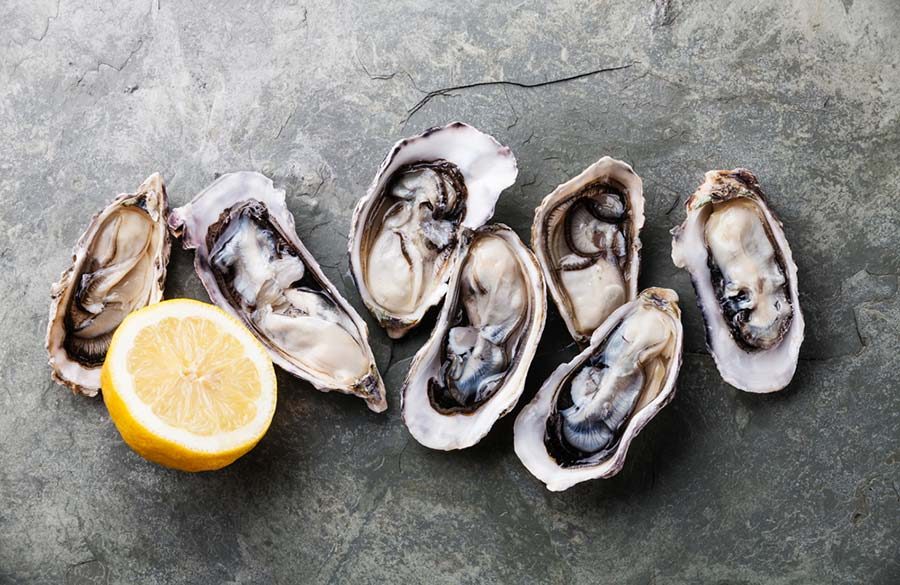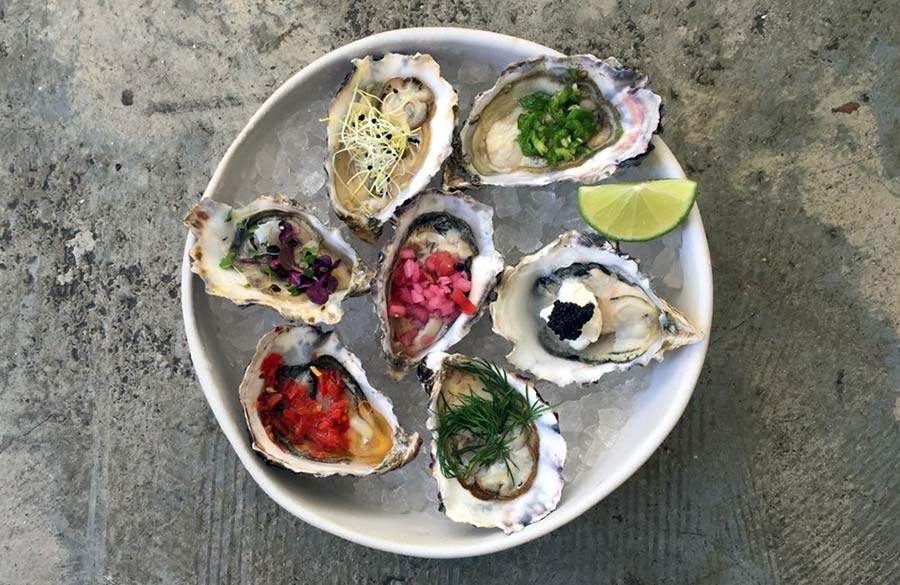How to master the humble oyster

A fresh oyster is like a fine wine – each has its own distinctive taste and texture that varies according to its place of origin, the climate in which it was grown, and how it was grown. For many seafood lovers, the appreciation of this bivalve mollusc is a lifelong pursuit, as each new place and variety is its own journey of discovery.
With so much to be experienced in one food, it can be hard to know where to start – which is exactly why we’re going to show you, in 5 simple steps, how to master the oyster and squeeze every drop of deliciousness and enjoyment from one of the oceans most sought-after delicacies.
Step 1 of oyster mastery: know your oyster
Two main species of oyster are farmed and/or harvested off South Africa’s coast – the Cape Rock Oyster (Striostrea margaritacea) and the Pacific Oyster (Crassostrea gigas). The Pacific Oyster is the most widely farmed locally, and also the one you’ll find when you order a delicious set of fresh oysters at Cape Town Fish Market.
Almost all the oysters we eat (about 95%) are farmed. This is a good thing, because through sustainable farming methods, we can enjoy oysters without disturbing the ocean environment through indiscriminate harvesting. Another reason to enjoy oysters is that they’re very good for you. In addition to being low in total calories, they are packed with vitamins, especially zinc. Just 6 oysters will give you 220% of your recommended daily intake of zinc.
According to legend, oysters are also an aphrodisiac. We recommend you decide for yourself…
Did you know?
You’re not likely to find a pearl when you open an oyster at a restaurant. Pearl oysters are actually a different species of oyster that are more closely related to the clam, a close cousin of the oyster.
Step 2 of oyster mastery: the only way is fresh
When it comes to ordering oysters, nothing is more important than freshness. Ensure your oysters are fresh, and you’ll have a great experience every time. It’s okay to ask your server to tell you when the oysters were harvested, but if they don’t know, there’s also a quick check you can do yourself by looking for what’s called the ‘oyster liquor’. Fresh oysters should still be hydrated with seawater, but if they appear dry or seem to be sticking to their shells, send them back. It may sound strange, but you want to eat your oyster alive!
Other important factors in ensuring quality include never using tap water on your oysters (it kills them), and having them served by an experienced shucker. A skilled shucker will pre-select oysters for you, leave the meat fully intact, and remove any grit that could get in the way of the oyster’s smooth texture on the palate.
At CTFM, our oysters are transported alive and well from South Africa’s west coast to our restaurants across the country within 48 hours and served fresh to our customers.

Step 3 of oyster mastery: how to taste an oyster like a pro
If you’re like us and you enjoy comparing oysters to wine, then you want to experience all the subtle tastes and flavours offered by a great oyster experience. Here are our tips for making your next set of oysters unforgettable…
- See the oyster. Every oyster’s shell is unique, so take time to appreciate its shape and colour.
- Smell the oyster. A fresh oyster smells like a sweet sea breeze, so don’t be afraid to breathe it in. Any fishy smell means it’s not fresh and you should send it back.
- Taste the oyster liquor. Don’t slurp it just yet. First taste just the liquor surrounding the oyster to get a sense of the sea from which it came and whet your appetite for the oyster meat.
- Now slurp it. Tilt the shell gently towards your mouth and let the oyster slip into your mouth with a dignified slurp. Remember, the oyster liquor is an essential part of the oyster experience, so don’t throw it away.
- Chew the oyster. There are different schools of thought about whether you should swallow the oyster whole or not, and doing so is perfectly acceptable. We do recommend chewing the oyster meat and savouring the progression of the experience as it moves from salty (the liquor) to a whole new set of flavours (the meat).
- Flip the shell. When you’re done, it’s good etiquette to flip the shell over and admire its unique shape and pattern.
And now you’re ready to do it all again!
Step 4 of oyster mastery: pairing oysters
For wine lovers…
Wines and champagnes are always a great pairing for oysters. Chilled dry white wines or MCCs (especially chardonnay-based ones) on ice are the classics. A good sauvignon blanc can complement your oysters to perfection. A good rule for choosing the right wine is taste the oysters first and then match the acidity of the wine to the brininess of the of oyster.
At CTFM you can’t go wrong with the award-winning Spier sauvignon blanc, but we also recommend expanding your horizons with our Bottega Gold prosecco.
For beer lovers…
Oysters and beer? Definitely. Lagers and pilsners, a good IPA or even a stout like Guinness are all great companions to your oyster feast. There is even such a thing as an ‘oyster stout’ – a beer made with real oysters – for those feeling adventurous. One of our favourite combinations happens to be oysters and Stella Artois. Through much happy experimentation, we’ve found our Belgian friend gets along famously with our favourite mollusc.
Step 5 of oyster mastery: the finishing touches
While you can always have your oysters naked, the right topping can add a whole new dimension to the experience. At CTFM, we keep it simple and we keep it classic: we serve our oysters on ice (of course) with a traditional mignonette sauce which we make ourselves and fresh lemon wedges. For us, it’s perfection. If you’re trying it at home, however, a good rule would be to think about what is going to complement something briny (the oyster) without overpowering it. Freshly ground black pepper, caviar, lime and grated ginger are all firm favourites of ours.
Now it’s official – you’ve mastered the basics of the humbler oyster. There’s only one thing left to do to graduate – satisfy your hunger with a set of four or eight fresh oysters at your local Cape Town Fish Market and enjoy them like the seafood expert you are.


